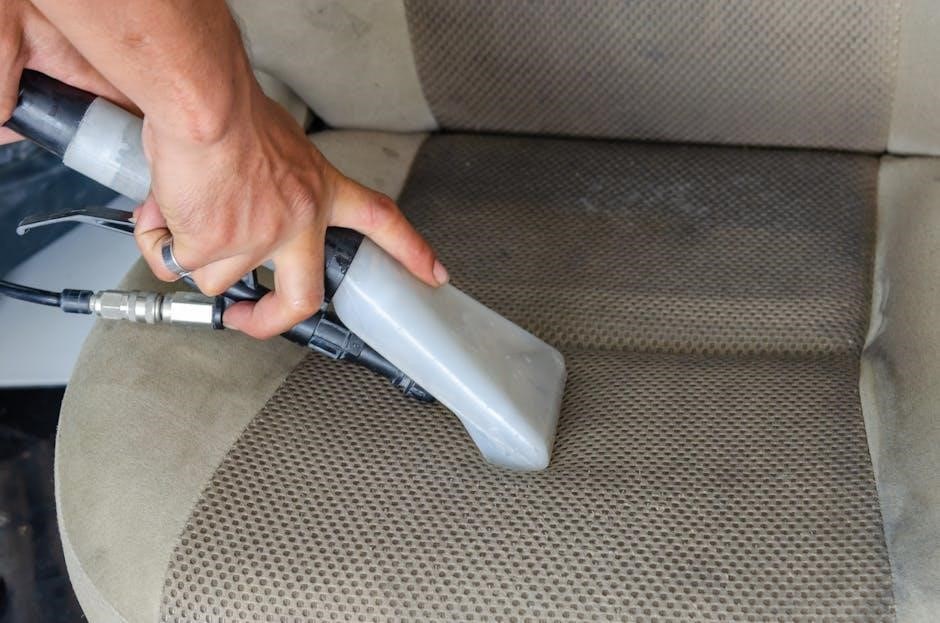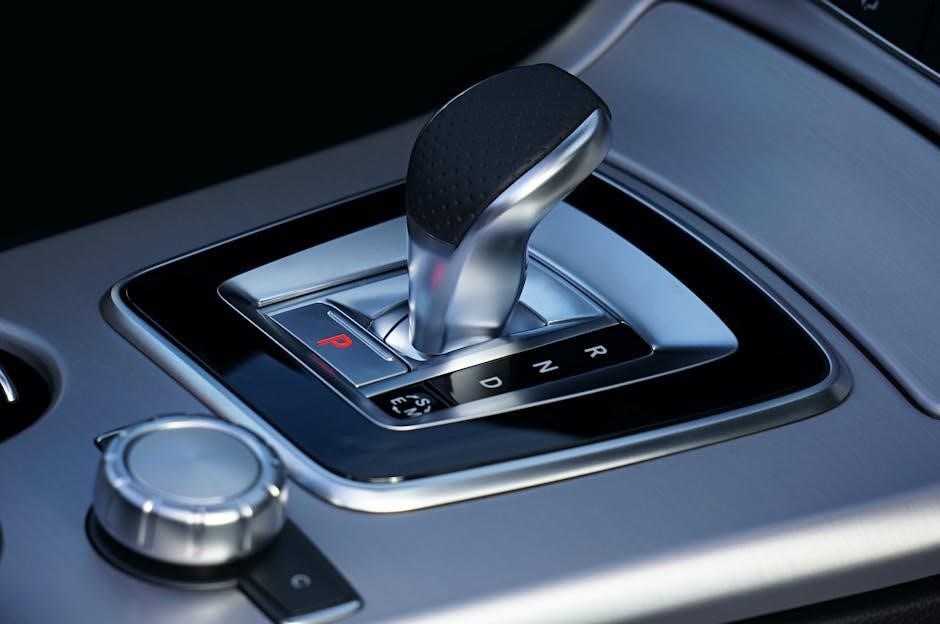red snap’r 66b manual
Welcome to the Red Snapr 66B Manual, your comprehensive guide to understanding and operating the Red Snapr 66B Electric Fence Energizer. This manual is designed to help you safely and effectively use the device for managing electric fences, ensuring optimal performance and longevity. Whether you’re a seasoned user or a newcomer, this guide provides essential information to maximize your experience with the Red Snapr 66B.
1.1 Overview of the Red Snapr 66B Electric Fence Energizer
The Red Snapr 66B Electric Fence Energizer is a reliable and efficient device designed for managing electric fences. It is suitable for covering up to 15 miles in moderate, dry conditions and is effective for all animals except predators. Known for its durability and performance, the Red Snapr 66B is a popular choice among farmers and hobbyists. This energizer is designed to provide consistent power output, ensuring your fence remains secure and functional. Its user-friendly design makes it easy to install and maintain, offering a practical solution for livestock management and property protection.
1.2 Importance of Reading the Manual
Reading the Red Snapr 66B Manual is crucial for safe and effective use of the electric fence energizer. It provides detailed instructions on installation, operation, and maintenance, ensuring optimal performance. The manual highlights safety precautions to prevent accidents and equipment damage. By understanding the device’s features and limitations, users can avoid misuse and prolong its lifespan. Familiarizing yourself with troubleshooting tips and best practices will help resolve issues quickly. Always follow the guidelines to ensure safe and efficient operation of the Red Snapr 66B.
1.3 Safety Precautions and Warnings
Always read and follow the guidelines in this Red Snapr 66B Manual to ensure safe operation. Avoid overloading the system, as it may cause damage or malfunction. Never touch live components or handle the energizer without proper insulation. Keep the device out of reach of children and pets. Ensure the fence is not near flammable materials. Regularly inspect wires and connections for damage. Ground the system correctly to prevent shocks. Follow all local regulations and safety standards when installing and using the Red Snapr 66B.
- Avoid overloading the system.
- Do not touch live components without proper insulation.
- Keep the device away from children and pets.
- Ensure proper grounding to prevent shocks.
- Regularly inspect wires and connections for damage.
Key Features of the Red Snapr 66B
The Red Snapr 66B offers a 15-mile coverage, ideal for managing various animals except predators, with a moderate to dry setting for reliable electric fencing performance.
2.1 Technical Specifications
The Red Snapr 66B is a high-performance electric fence energizer designed for reliability and efficiency. It offers a 15-mile coverage range, making it suitable for moderate to dry conditions. The device is compatible with 6V and 12V battery systems, ensuring flexible power management. It is engineered to handle all types of animals, except predators, with a robust output designed for optimal fence performance. The energizer also features a red LED indicator for easy battery voltage monitoring, ensuring you stay informed about its operational status at all times.
2.2 Coverage Area and Animal Types
The Red Snapr 66B is designed to cover up to 15 miles of electric fencing, making it ideal for large-scale livestock management. It is suitable for all types of animals, including cattle, horses, and sheep, but is not recommended for predators. The device performs best in moderate to dry conditions, ensuring reliable operation for your fencing needs. This versatility makes it a practical choice for both hobby farms and commercial livestock operations.
2.3 Battery Voltage and Power Management
The Red Snapr 66B operates efficiently with a recommended 12V battery, ensuring consistent power delivery. It features advanced power management to optimize energy use, reducing battery drain. Regular voltage checks are essential to maintain performance. The device supports deep-cycle batteries for prolonged operation in remote areas. Avoid using incorrect voltage sources to prevent damage. Proper battery maintenance ensures reliable electric fencing performance and extends the lifespan of the energizer. Always follow the manual’s guidelines for battery care and replacement.

Installation and Setup
Proper installation of the Red Snapr 66B is essential for safe and efficient operation. Begin by selecting a suitable location, then assemble and connect components as outlined. Ensure correct grounding and wiring to prevent hazards and optimize performance. Always follow the manual’s specific guidelines for a successful setup.
3.1 Choosing the Right Location
Selecting the ideal location for your Red Snapr 66B is crucial for optimal performance. Ensure the device is placed in an area with easy access for maintenance and monitoring. It should be protected from direct sunlight, moisture, and extreme weather conditions. Choose a flat, stable surface to prevent tilting or movement. The location should also be close to the fence line and power source, if applicable. Avoid areas with standing water or excessive humidity to maintain safety and efficiency.
3.2 Assembly and Connection of Components
Begin by carefully unpacking and identifying all components of the Red Snapr 66B. Follow the manual’s instructions to assemble the energizer and its accessories. Connect the fence wire to the designated output terminal, ensuring secure fastening. Next, attach the ground system, burying the ground rod as specified. Use Red Snapr plastic insulators for safe and reliable connections. Double-check all wiring to avoid short circuits. Finally, test the system at a low setting to confirm proper operation before full deployment.
3.3 Grounding and Wiring Instructions
Proper grounding and wiring are critical for the safe and effective operation of the Red Snapr 66B. Begin by selecting a suitable location for the ground rod, ensuring it is at least 10 feet away from the fence to avoid interference. Drive the ground rod 6-8 feet into the soil and connect it to the energizer’s ground terminal using insulated wire. Next, attach the hot wire to the fence line, ensuring all connections are secure and free from corrosion. Avoid using the same ground rod for other devices to prevent voltage interference. Finally, test the system to confirm proper operation.
Operating the Red Snapr 66B
Power on the Red Snapr 66B and monitor the LED indicators for voltage and system status. Adjust settings as needed for optimal performance and animal safety.
4.1 Powering On the Device
To power on the Red Snapr 66B, insert the recommended battery and ensure all connections are secure. Turn the power switch to the “ON” position. The device will activate, and the red LED indicator will light up, confirming it is operational. Always ensure the fence line is clear of debris and vegetation before powering on. Wear insulated gloves for safety. The energizer will begin pulsing electricity through the fence wires, providing effective animal control and security. Follow the manual’s guidelines for optimal performance and safety.
4.2 Monitoring the LED Indicators
Monitoring the LED indicators on the Red Snapr 66B is crucial for ensuring proper operation. The red LED indicates the device’s battery voltage, allowing quick checks of power levels. Always observe the LEDs during operation to detect any issues promptly. For detailed guidance on interpreting the indicators, refer to the manual. Regular monitoring helps maintain optimal performance and prevents potential malfunctions. Ensure the LEDs are visible and unobstructed for accurate readings. This feature is designed to simplify fence management and enhance user experience.

4.3 Adjusting Settings for Optimal Performance
To ensure the Red Snapr 66B operates at its best, adjust settings based on your fence’s specific needs. Use the control panel to fine-tune output voltage and pulse intervals. Monitor the LED indicators to verify battery voltage and system status. Regularly check and adjust the fence’s grounding to maintain efficiency. For optimal performance, synchronize settings with the type and size of your fence, as well as the animals it contains. Proper adjustments will enhance effectiveness and prolong the device’s lifespan.
Maintenance and Troubleshooting
Regularly check battery voltage and inspect components for wear. Replace damaged insulators and wires promptly. For issues, consult the troubleshooting guide or contact Red Snapr support.
5.1 Regular Maintenance Tips
Regular maintenance is crucial for ensuring the Red Snapr 66B operates efficiently. Check the battery voltage monthly and recharge as needed. Clean connections and wires to prevent corrosion. Inspect the fence line for damage or wear, and repair promptly. Monitor the LED indicators to ensure proper function. Keep the unit dry and store it in a cool, dry place during off-seasons. Replace worn or damaged components immediately to maintain performance. Following these tips will extend the lifespan of your Red Snapr 66B and ensure reliable operation.
5.2 Common Issues and Solutions
Common issues with the Red Snapr 66B include low battery voltage, faulty wiring, or malfunctioning LED indicators. To resolve these, check battery levels using the built-in voltage monitor and recharge if necessary. Inspect wiring for damage or loose connections and ensure proper grounding. If the LED indicators flash erratically, refer to the troubleshooting guide in this manual. Resetting the device may also resolve unexpected behavior. Always follow safety guidelines when addressing issues to avoid electrical hazards.
5.3 Resetting the Device
To reset the Red Snapr 66B, first ensure the device is powered off. Disconnect the battery and all external connections. Wait 5 minutes to allow any stored energy to discharge. Reconnect the battery and turn the device back on. If issues persist, refer to the troubleshooting section or contact technical support. Always follow safety guidelines when handling electrical components to avoid accidents. Resetting should only be done when necessary and as a last step in resolving operational problems. This ensures optimal performance and longevity of the energizer.
Safety Guidelines and Best Practices
Always follow the Red Snapr 66B Manual instructions to ensure safe operation. Avoid overloading the system, and never use the energizer for purposes other than intended. Ground the device properly and keep it out of reach of children and pets. Regularly inspect wires and connections to prevent hazards. Use recommended insulators and avoid touching live fences to prevent electric shock. Adhere to all warnings and guidelines for optimal safety and performance.
6.1 Handling Electric Fence Components

Always handle Red Snapr 66B components with care to ensure safety and functionality. Wear insulated gloves when working with electric fence parts to avoid shocks. Never touch live wires or components with bare hands. Keep the energizer and accessories dry to prevent short circuits. Regularly inspect wires, insulators, and connections for damage. Avoid overloading the system, as this can lead to malfunctions. Follow the manual guidelines for proper installation and maintenance to ensure reliable performance and longevity of your electric fence system.
6.2 Avoiding Overloading the System
To ensure optimal performance and longevity of the Red Snapr 66B, avoid overloading the system. Do not exceed the recommended number of wires or connect more fence lines than specified. Overloading can lead to reduced efficiency, inconsistent voltage, and potential damage to the energizer. Always adhere to the guidelines provided in the manual for the maximum capacity of the device. Excessive strain may result in poor performance or even system failure, compromising the effectiveness of your electric fence setup.
6.3 Protecting the Device from Environmental Factors
To ensure the longevity of the Red Snapr 66B, protect it from harsh environmental conditions. Store the device in a dry, shaded area to avoid exposure to direct sunlight and rain. Use a weather-resistant cover to shield it from moisture and dust. Avoid placing it in areas prone to flooding or extreme temperature fluctuations. Regularly inspect the unit for signs of wear or pest damage. Secure the device firmly to prevent movement caused by wind or animals. This will help maintain its efficiency and reliability over time.
Compatibility and Accessories
The Red Snapr 66B is compatible with a range of accessories, including Red Snapr plastic insulators and Zareba Systems components, ensuring seamless integration and enhanced functionality for your electric fencing needs.
7.1 Supported Insulators and Wiring
The Red Snapr 66B is compatible with a variety of insulators to ensure reliable electric fence performance. For optimal results, use Red Snapr plastic insulators, which are specifically designed to withstand outdoor conditions and provide excellent electrical insulation. Avoid using incompatible materials, as they may lead to power loss or safety hazards. Always follow the wiring guidelines outlined in this manual to ensure proper connections and system efficiency. Correct wiring is crucial for maintaining the fence’s effectiveness and safety.
7.2 Compatible Battery and Power Sources
The Red Snapr 66B is designed to work with compatible battery models, including the LIMB80, LIMB120, and LIS5. It supports a 12V battery system, ensuring reliable power delivery. For optimal performance, use a high-quality, deep-cycle battery. Solar charging is also supported, making it eco-friendly and convenient for remote locations. Always follow the manufacturer’s guidelines for battery installation and maintenance to ensure safety and longevity of the device. Proper power management is crucial for consistent fence performance.
7.3 Recommended Additional Equipment
For optimal performance of the Red Snapr 66B, consider using Red Snapr plastic insulators to prevent energy loss. High-quality wiring and connectors are essential for reliable operation. A voltage tester is recommended to monitor fence performance. Additionally, grounding rods and solar charging systems can enhance functionality. For larger setups, compatible Zareba Systems accessories, such as fence monitors, are suggested. Always ensure all equipment is compatible with the Red Snapr 66B to maintain safety and efficiency. Refer to the manual for a full list of recommended accessories.

Environmental Considerations
The Red Snapr 66B is designed with energy efficiency in mind, minimizing power consumption while maintaining performance. Eco-friendly practices are encouraged for fence management, and proper disposal methods are recommended to ensure environmental sustainability.
8.1 Energy Efficiency and Power Consumption
The Red Snapr 66B is designed with energy efficiency in mind, ensuring minimal power consumption while delivering reliable performance. It operates on a low-power circuit, reducing battery drain and extending the life of your power source. The device includes features like voltage monitoring to optimize energy use, making it an eco-friendly choice for electric fencing. By minimizing power waste, the Red Snapr 66B supports sustainable farming practices and reduces environmental impact without compromising on effectiveness.
8.2 Eco-Friendly Practices for Fence Management
Adopting eco-friendly practices with the Red Snapr 66B ensures sustainable fence management. Optimize energy use by monitoring battery levels and adjusting settings to minimize power consumption. Consider solar-powered options to reduce reliance on non-renewable energy sources. Regularly inspect and maintain fencing to prevent overloading, which can waste energy. Dispose of old components responsibly, recycling where possible. Use durable, weather-resistant materials to extend equipment lifespan and reduce environmental impact. These practices align with the Red Snapr 66B‘s efficient design, promoting eco-conscious livestock or property management.
8.3 Disposal and Recycling Guidelines
Proper disposal of the Red Snapr 66B and its components is essential for environmental protection. Always follow local regulations for electronic waste disposal. Remove batteries and electrical parts, as they require specialized recycling. Consider partnering with certified e-waste centers to ensure safe processing. Additionally, reset the device to factory settings before disposal to protect personal data. By recycling responsibly, you contribute to sustainability and align with Red Snapr‘s commitment to eco-friendly practices. Proper disposal helps minimize environmental impact and promotes a greener future.
Manufacturer Information and Support
Red Snapr has been a trusted name in electric fence solutions since the 1950s, offering reliable products like the 66B. Their dedicated customer service and technical support teams ensure assistance with inquiries, repairs, and warranty claims, providing peace of mind for users.
9.1 About Red Snapr and Its History
Red Snapr has been a trusted name in electric fencing solutions since the 1950s, providing high-quality products for livestock management, hobby farms, and homeowners. Known for reliability and innovation, Red Snapr specializes in electric fence chargers, insulators, and related accessories. Their commitment to durability and performance has made them a leader in the industry, with products like the 66B energizer setting standards for efficiency and safety. This legacy ensures users can rely on Red Snapr for effective and long-lasting electric fencing systems.
9.2 Customer Service and Technical Support
Red Snapr offers dedicated customer service and technical support to ensure your experience with the 66B is seamless. Their team is available to address inquiries, provide troubleshooting assistance, and guide you through installation or maintenance processes. For assistance, contact their support team via phone or email, as detailed in the manual. They prioritize customer satisfaction, offering reliable solutions to maximize your device’s performance and longevity. Reach out for expert help whenever you need it.
9.3 Warranty and Repair Options
The Red Snapr 66B is backed by a limited warranty covering manufacturing defects for a specified period. For warranty claims, contact Red Snapr customer support with proof of purchase. Repairs are handled by authorized service centers, ensuring genuine parts are used. Out-of-warranty repairs are available at a cost, with detailed instructions provided in the manual. Proper maintenance and adherence to guidelines can prevent unnecessary repairs and extend the product’s lifespan. Always use approved replacement parts to maintain warranty validity and ensure optimal performance.

User Reviews and Feedback

Users praise the Red Snapr 66B for its reliability and effectiveness in managing electric fences. Many highlight its ease of installation and durability, making it a top choice for livestock and hobby farms. Customers appreciate its consistent performance and user-friendly design, with some sharing tips for optimal setup and maintenance.
10.1 Customer Testimonials and Experiences
Users praise the Red Snapr 66B for its reliability and durability in various fencing applications. Many highlight its effectiveness in managing livestock, with one user noting it “works flawlessly even in dry conditions.” Another customer appreciated the ease of installation and its ability to cover up to 15 miles. The LED indicators and battery voltage monitoring features are frequently commended for their convenience. Overall, the Red Snapr 66B is well-regarded for its performance, ease of use, and value, making it a trusted choice for electric fencing needs.
10.2 Common Praise and Criticisms
Users often praise the Red Snapr 66B for its reliability, ease of use, and effectiveness in managing electric fences. Many highlight its durability and ability to handle various weather conditions. However, some critics mention the complexity of initial setup and the need for clearer instructions. Additionally, a few users note that the battery life could be improved for longer uninterrupted operation. Overall, the device is well-regarded for its performance but may require some adjustments to meet all user expectations.
10.3 User-Generated Tips and Modifications
Users of the Red Snapr 66B have shared valuable tips to enhance its performance. Many recommend using high-quality insulators to prevent energy loss and ensure consistent voltage. Regularly checking the battery voltage is also advised to maintain optimal power levels. Some users suggest adding a protective cover to shield the device from harsh weather conditions. Additionally, installing a remote monitoring system can provide real-time updates on fence performance. These modifications and tips can significantly improve the efficiency and longevity of your electric fencing system.

Conclusion and Final Thoughts
In conclusion, the Red Snapr 66B Manual provides a detailed guide for safe and effective use of the electric fence energizer. Always follow safety guidelines and best practices to ensure optimal performance and longevity of the device. Proper usage and regular maintenance will help you achieve reliable results in managing your electric fence system.
11.1 Summary of Key Points
The Red Snapr 66B Manual provides a detailed guide for safe and effective use of the electric fence energizer. Key points include proper installation, regular maintenance, and adherence to safety precautions. The device is designed for managing electric fences, with features like battery voltage monitoring and LED indicators for optimal performance. Always follow the manufacturer’s instructions to ensure longevity and efficiency. This summary highlights essential takeaways for users to maximize their experience with the Red Snapr 66B.
- Adhere to safety guidelines to avoid accidents.
- Regularly inspect and maintain the system for optimal functionality.
- Refer to the manual for troubleshooting common issues.

11.2 Final Safety Reminders
Always follow the instructions in this Red Snapr 66B Manual to ensure safe and effective use. Avoid overloading the system, as it can lead to malfunction. Regularly inspect the fence and components for damage or wear. Keep the device dry and protected from environmental hazards. Never touch electrical components without proper insulation. Remember, safety is paramount when working with electric fence systems. Adhere to these guidelines to prevent accidents and maintain optimal performance. Refer to the manufacturer’s recommendations for any additional precautions.
11.3 Encouragement for Proper Usage
Properly using the Red Snapr 66B ensures optimal performance, safety, and longevity of your electric fencing system. By following the guidelines in this manual, you can maximize the device’s efficiency and effectiveness. Regular maintenance and adherence to safety precautions will help prevent issues and ensure reliable operation. Encourage others to use the Red Snapr 66B responsibly, promoting a secure and efficient fencing solution for your livestock or property. Your attention to detail and commitment to proper usage will yield long-term benefits and satisfaction.

Appendix and Additional Resources
This section provides supplementary materials, including a glossary of terms, links to further reading, and contact information for technical support and inquiries about the Red Snapr 66B.
12.1 Glossary of Terms
Electric Fence Energizer: A device that converts stored energy into high-voltage pulses for fencing. Joule: A unit measuring energy stored. Volts: Measure of electric potential. Insulator: Prevents current leakage. Grounding: Connects the system to earth for safety. LED Indicators: Show device status. Battery Voltage: Power source measurement. Overloading: Exceeding system capacity. Eco-Friendly: Environmentally responsible practices. Warranty: Manufacturer’s guarantee. Recycling: Proper disposal methods. Compatibility: Ensures parts work together. Efficiency: Optimal energy use. Safety Precautions: Essential guidelines to prevent hazards. Technical Support: Assistance for troubleshooting. Animal Types: Species the fence manages. Coverage Area: Maximum fencing capacity. Power Management: Energy regulation. Environmental Factors: Weather and external conditions. Regular Maintenance: Routine care for longevity. Common Issues: Frequently encountered problems. Resetting: Reinitializing the device. Handling Components: Safe management of parts. Overloading: Exceeding system limits. Protecting Device: Safeguarding from damage. Supported Insulators: Compatible fencing materials. Battery Sources: Power options. Additional Equipment: Recommended accessories. Energy Efficiency: Optimal power use. Eco-Friendly Practices: Sustainable methods. Disposal: Proper waste management. Recycling Guidelines: Environmentally responsible disposal. Manufacturer History: Background of Red Snapr. Customer Service: User support options. Warranty Options: Repair and replacement terms. Customer Testimonials: User experiences. Common Praise: Frequently highlighted benefits. Criticisms: Areas for improvement. User Tips: Advice from experienced users. Modifications: Custom adjustments. Key Points: Summary of main ideas. Safety Reminders: Final cautionary notes. Proper Usage: Encouragement for responsible operation. Glossary: Definitions of technical terms. Further Reading: Additional resources. Contact Information: Support details.
12.2 Further Reading and References
For deeper understanding, visit the Red Snapr official website for detailed guides and technical specs. Refer to the Zareba Systems website for complementary resources on electric fencing. Explore the Red Snapr 66B User Manual for specific instructions. Check the LIMB80, LIMB120, and LIS5 manuals for related products. Visit the Agri Solar Energiser Manual for energy management insights. Review the CatEye Manual for accessory compatibility. These resources provide comprehensive support for optimal use and troubleshooting of the Red Snapr 66B.
12.3 Contact Information for Support
For any inquiries, technical assistance, or troubleshooting, contact Red Snapr support at support@redsnapr.com or call 1-800-RED-SNAP (1-800-733-7627). Visit their official website at www.redsnapr.com for additional resources. Mailing address: Red Snapr Customer Service, 123 FarmTech Drive, Ruralville, USA 12345. Office hours: Monday–Friday, 8 AM–5 PM CST. For urgent issues, please allow 24–48 hours for a response.






































































